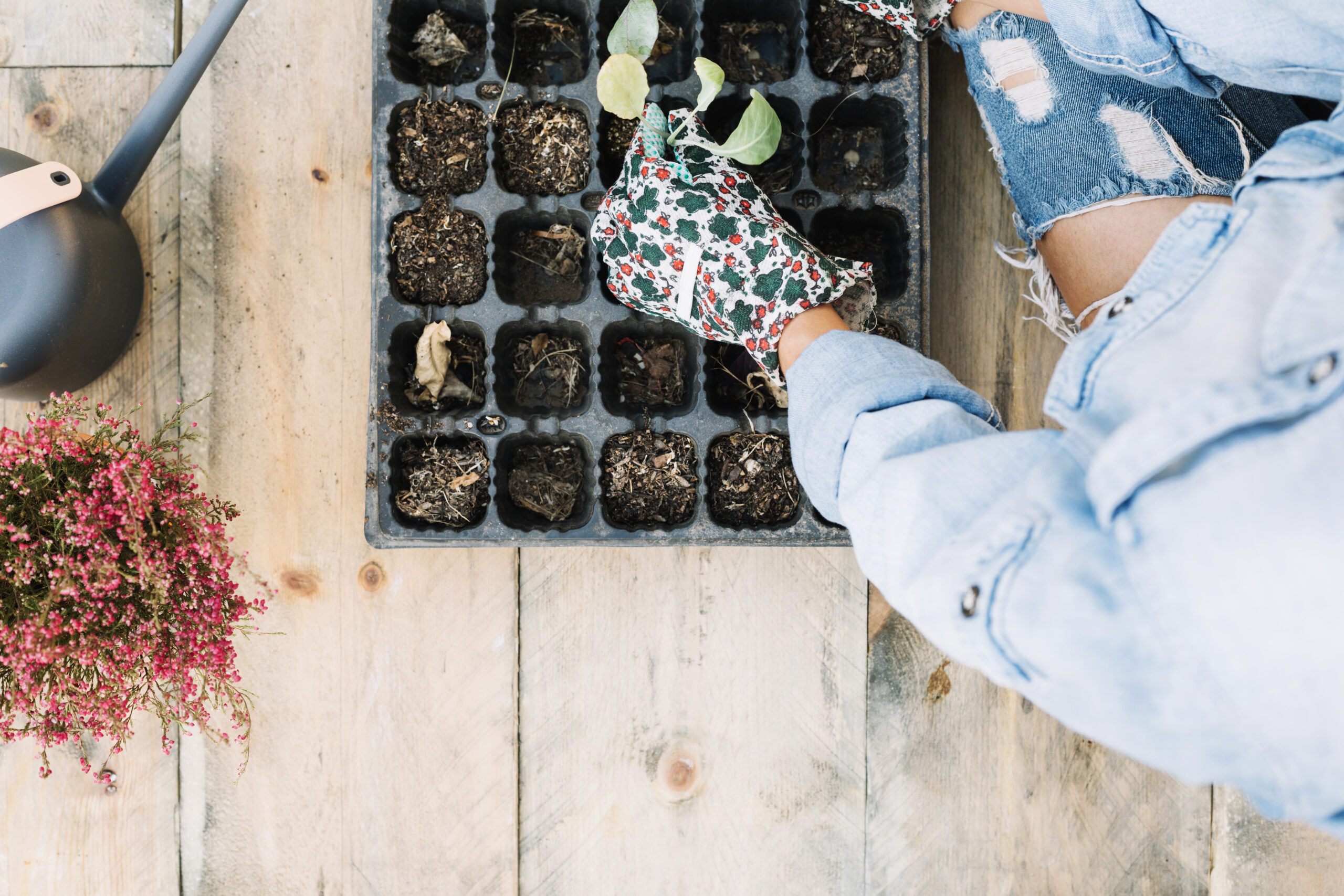
Whether sowing seeds indoors or directly in your garden beds, choosing the right seed-starting soil holds the key to strong, productive seedlings. But between potting mixes, compost, and garden soil, how do you pick the perfect substrate for tiny seedling roots? In this article, we’ll focus on five easy steps to selecting the Best Soil for Seed Starting so you can nurture robust transplants from the get-go. Read on for dirt-worthy tips tailored for thriving success!
1. Assess Seedlings’ Needs
Different life stages require varying qualities. Seeds only need moisture retention, while sprouts and young plants require drainage, aeration, microbes, and fertilizing abilities. Think about texture, moisture-holding properties and nutrient content best for each stage’s unique needs.
2. Remove Garden Soil
Gardeners know the magic of nurturing a tiny seed into a thriving plant. But sometimes, that magic can come with unexpected guests: disease, pests, and even unwanted weedlings hiding in the very soil that nourishes our green dreams. This is where seed starting takes a dramatic turn – ditch the backyard dirt and embrace the world of sterile, soilless mixes for a clean, protected launchpad for your precious seedlings.
Why Ditch the Dirt?
While garden soil boasts hidden nutrients, it also harbors hidden terrors. Tiny spores of fungal diseases, hungry insect larvae, and dormant weed seeds all lie in wait, ready to ambush your delicate sprouts. Sterilizing garden soil with heat or chemicals might seem like a solution, but it’s a double-edged sword. Heat can break down the soil’s beneficial structure, and chemicals can leave harmful residues.
Enter the Soilless Savior:
A sterile, soilless mix is like a superhero for your seedlings. Imagine a lightweight, well-draining playground, free from pesky invaders and full of just the right amount of nutrients. These mixes offer a controlled environment that prioritizes:
- Cleanliness: No diseases, pests, or weeds to worry about – a blank slate for healthy growth.
- Drainage: Perfect air circulation for happy roots, preventing wilting and rot.
- Nutrients: Just the right amount to fuel young plants without overwhelming them.
- Consistency: Uniform texture allows for even moisture distribution, making watering a breeze.
Choosing Your Mix:
Soilless mixes come in a variety, each with its own blend of heroes. Peat moss provides moisture retention, while coco coir adds drainage and sustainability. Perlite and vermiculite bring airiness, and sand keeps things grounded. Look for a mix specifically designed for seed starting, and watch your little green heroes take off!
3. Consider Light & Drainage
Picture this: your tiny seed, a miniature adventurer, sets off on a quest to become a glorious plant. But the journey’s perilous! Too much water turns the path into a swamp, drowning roots and dreams. Too little, and scorching sun parches the land, leaving our hero withered and weak. This, my friends, is the delicate dance of seedling survival, where finding the Goldilocks mix of light, drainage, and moisture is everything.
Fear not, intrepid gardeners! Forget muddy messes and backaches. Enter the world of fluffy, well-aerated mixes. These aren’t your garden-variety soil clumps. Think clouds for thirsty sprouts, letting water flow freely while holding enough for those first sips of life. Perlite, vermiculite, and coarse sand become trusty companions, building bridges of air for roots to breathe.
But wait, a twist! As our adventurers grow, their needs evolve. Think sturdier plants, like towering trees-in-training. They crave a bit more substance, a mix with a heavier hand. Sand and fine bark come to the party, lending support and structure for their upward climb.
Remember, the Goldilocks mix is personal:
- Cacti and succulents: Desert warriors with grit! Give them a sandy haven, drainage their lifeblood.
- Water lilies: Pond pirates who love a dip! They yearn for a moisture-rich oasis, coco coir their loyal steed.
Tips for Mix Mastery:
- Seed packet whispers: They often hold clues to the ideal mix for your tiny travelers.
- Start light, adjust later: When in doubt, air is your friend. Add moisture-loving stuff if needed later.
- Loosey-goosey is the way: No tightly packed prisons! Let the mix breathe for happy root dances.
- Water wisdom: Don’t drown or parch! Learn your mix’s thirst cues, a deep drink when the top feels dry.
With light, drainage, and the Goldilocks mix in your arsenal, you’ll watch your seedlings transform from fragile explorers to flourishing giants. So go forth, brave gardeners, and create the perfect playground for your green dreams! The joy of nurturing tiny lives into vibrant worlds awaits.
4. Incorporate Organics
Compost, coir and well-rotted manure add beneficial microbes and nutrients as seeds develop, plus structure-building fibers improving water retention and drainage long-term. Too much can compact; too little offers little support. Balance organics for optimal support.
5. Adjust pH as Needed
Most seeds thrive in slightly acidic conditions between 6.0-7.0. Test your soil and amend accordingly—lime raises; sulfur lowers pH. Balanced pH optimizes nutrient availability crucial for strong growth during precarious early stages. Healthy soil habits start seedlings right.
6. Consider Commercial Mixes
Seed starting mixes offer consistent, sterile blends meeting fragile roots’ precise needs. Organic potting soils allow cultivation without pesticides or chemicals. Just avoid soil-based potting mixes, which risk problems. Reliable commercial options ensure consistent success.
In conclusion, by taking a few easy steps to thoughtfully select the Best Soil for Seed Starting tailored to each crop’s unique needs, you lay the groundwork for vigorous transplants destined to thrive. Your seeds and seedlings will love you for the dirt love providing their ideal growing start. Keep these tips in your pocket for planting perfection each season!
